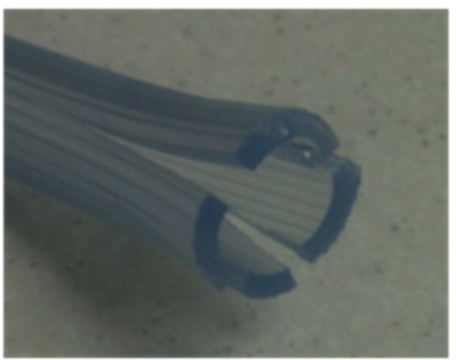It’s a classic case that should make us sweat – the patient who is bleeding after tonsillectomy. A dive into the [cough] extensive literature with Dr Andrew Weatherall.
There are just some things where the description in the books doesn’t match the experience in real life. There are whole teams of journalists who manage to make politicians sound close to human. There has probably never been a description of any food that was much like eating food. Even the Lord of the Rings was probably a bit different for an actual halfling carrying a personally inscribed trinket.
The patient bleeding after tonsillectomy is also underdone in the descriptions in books, no matter how florid the words. Until you’ve seen a patient really suffering with this it’s hard to imagine quite how precarious their situation can be. It’s just not reflected in sober stats about percentage blood loss or even cups of blood collected.
The ingredients should be pretty obvious though. A patient with a combination of hypovolaemia and sometimes active airway haemorrhage, with a presumed full stomach is likely to be a challenge. That’s why this scenario is pretty popular in exams. And of course that’s why there is so much literature addressing this anaesthetic challenge in full.
Except …
The Library
There isn’t. Well it might be my terrible literature searching, but there doesn’t seem to be a huge amount of stuff in the library looking at this particular anaesthetic conundrum.
By which I mean I found one study.

Yes I did a lot of looking through chimneys made of books even.
That one study is a cohort study and the numbers are almost surprisingly big, but that’s it. At the start of the paper, they also kick off with “There have been no published reports of the anaesthetic management of children with post-tonsillectomy haemorrhage.” They looked in the wrong book chimneys too I guess.
Everything else I’ve ever heard turns out to pretty much be expert opinion. We can try to make our opinions more expert though so let’s dive into what there is. Well, maybe we shouldn’t dive into such a shallow pool. Maybe we’ll just paddle where we can.
The Crunchy Numbers
This crew from The Children’s Hospital of Philadelphia looked back at their records of kids requiring an operation for post-tonsillectomy haemorrhage from 1998-2005. Over that time they had 475 patients to check out.
Now you might immediately say “475 patients over 7 years is nearly 70 patients with bleeding tonsils a year and that is insane”. It’s worth noting though that there were also 16596 tonsillectomies done over that time (or around 45 per week) so the overall incidence of 2.9% isn’t too crazy.
So how did they go about things?
- Rapid sequence induction was pretty popular
401 of the patients (that’s 84.4%) were parties to this plan, while another 26 (or 5.5%) had modified RSI. Inhalational technique only happened in 15 (3.2%), 2 had a tracheostomy induction and the induction technique was (!) not specified in 29.
- Suxamethonium is a drug people use
OK, maybe “used to use”. 420 of the patients (more than had RSI) received sux. Only 47 (8%) had a non-depolarising agent. You have a suspicion that split would look different now, but it’s a timely reminder that suxamethonium is a drug that works.
- Blood doesn’t always need blood
While the range of recorded intraoperative loss was anywhere from 0 to 500 mL, there was only a definite record of it in 50 patients. Also there were only 3 patients who received intraoperative red cell transfusion.
- Hypoxia can happen
It occurred 50 times here (9.9% of the time) but most events (as in 28) occurred at extubation rather than around induction (where there were 14).
- Difficult intubations still aren’t common
There were 13 (2.7%) recorded cases with difficult laryngoscopy. Of these 13, 6 were said to be difficult due to blood in the airway while 2 were said to have anatomic issues. 2 of the 13 needed more than one attempt at the intubation. Interestingly none of the 13 patients were said to have been difficult to intubate at their initial procedure.
And that is pretty much that. Which is great if the bit you care about is a description of stuff that happens. Not so useful if you are after practical tips though.
The Vox Pop
How about some real things that clinical types do then?
In an entirely informal way and with much less rigour than the retrospective trawl through 7 years of records described in the paper, corridor chats revealed a pretty uniform set of tips.
1. Assume lots of blood loss
I mean, not just assume. Do a heap of assessment and get a handle on whether there has been enough bleeding to influence the haemodynamics. Plus whatever amount of bleeding has been evident, there’s been more. Remember most of that blood has been swallowed and is probably busy being untasty.
2. Be ready to replace lots of blood loss
It’s almost like number 2 follows number 1. Decent IV access and a readiness to transfuse were pretty popular. Obviously that cohort suggests that maybe transfusion is not that often required intraoperatively, but there should at least be the scope to provide adequate fluid resuscitation, with a low threshold for transfusion.
3. RSI
Pretty much everyone I asked said ‘RSI’. The combination of blood in the stomach and the risk of aspiration (amongst other issues) had people electing for this as the option rather than options like inhalational induction where there is that additional time taken to get to the plane of anaesthesia you’re after.
4. Make it all suck
Suction was probably the commonest thing people mentioned in my incredibly low rent study. There were plenty of mentions of having 2 suckers available. I’m going to jump in with a tip from my prehospital colleagues where airway haemorrhage is something we’ve wrestled with. In that setting we found a second sucker wasn’t the most effective option for clearing that airway. Also, how many hands do you have?
So the key for left-sided sucker is to turn it into a sump sucker that won’t be fouled by soft tissues. How? Well there might be a fancy version, but we just do this…

To do this just requires a quick snip to cut across the end of the suction tubing, then we open up the end with longitudinal cuts of about 2 cm length which we then splay da bit. In practice this move opens up enough pathways to suction happening that it keeps working rather than getting soft tissues stuck in it.
So after preoxygenation, the sump sucker goes quickly into the pharynx via the left side of the mouth.
The right hand has the other important suction job. The key bit here is to lead with the suction so it is clearing the area just in front of the laryngoscope. Once the view is good, you can grab that endotracheal tube.
5. Empty that stomach
It’s full of blood. Blood in a stomach is not likely to make things more pleasant. So most seemed to say they’d empty it.
6. Use that ENT type
These are real emergencies and there’s a reason a surgeon is involved for the airway. So wait until they’re actually there. There are, of course, things that they will be useful for that we’re just not the ticket for – given that rare, but serious, event of blood getting below the glottis, things like rigid airway endoscopy better be handy.
So brief a plan with them, and make sure you’re starting the induction in a place where summoning the ENT cleverness results in them having the operative setting they need (for example, in the theatre rather than starting in a bay). Use them for their full range of skills.
So that’s a start. It might not be exhaustive and comments from clever people who might be reading would add greatly here.
It is definitely worth remembering that there is not a huge evidence base to help us here, so clear thinking and consideration of the safest approach is really important. Or at least remember that everything has to suck.
Notes:
Don’t forget you can subscribe to get emails if you want more. Plus comments are very welcome.
I elected not to go into details regarding timing and presentation of post-tonsillectomy bleeding in the interests of space and time for the reader. It’s written from the point of view of ‘well, they’re own front of me now. What next?’
Not many references here because, well there aren’t many references. That paper I mentioned is this one:
If prehospital and retrieval medicine is your thing, there’s more over at The Collective.
Now did you get all the way to this point? Maybe you should spend some time watching noodles get made by hand. And then maybe be ashamed that you don’t love noodles as much as those guys.

The surgeon’s headlight can be useful during laryngoscopy.
LikeLike
Good tip. In prehospital work we often try to decrease the broader ambient light because it makes things trickier for visibility down the airway. Do you don that headlight yourself then?
LikeLike
Yes, wear the headlight.
LikeLike
I sometimes start by blindly putting an extra ET tube down in the oesophagus and then inflate the cuff. All gastric blood will evacuate there while the airway can be sorted….
LikeLike
Pingback: Shared Blood – Bleeding Tonsils | Prehospital and Retrieval Medicine - THE PHARM dedicated to the memory of Dr John Hinds·
Pingback: The 2018 Year in Review | Songs or Stories·